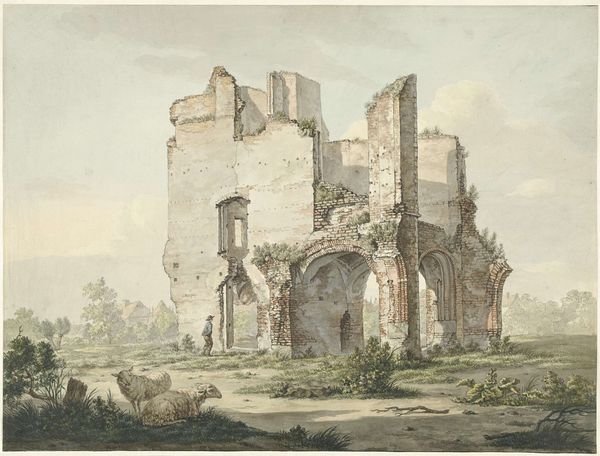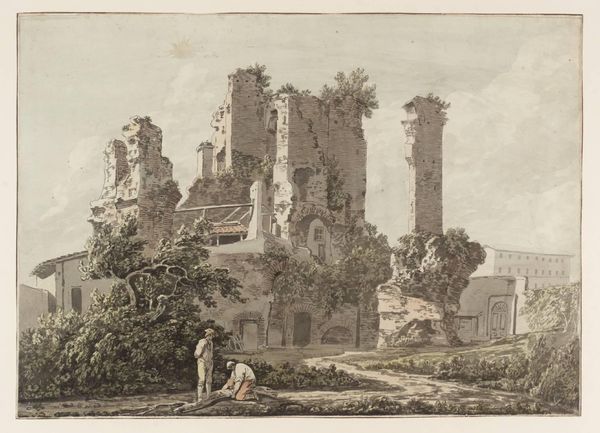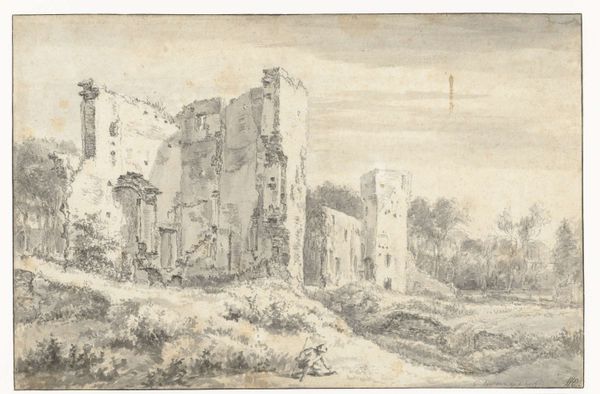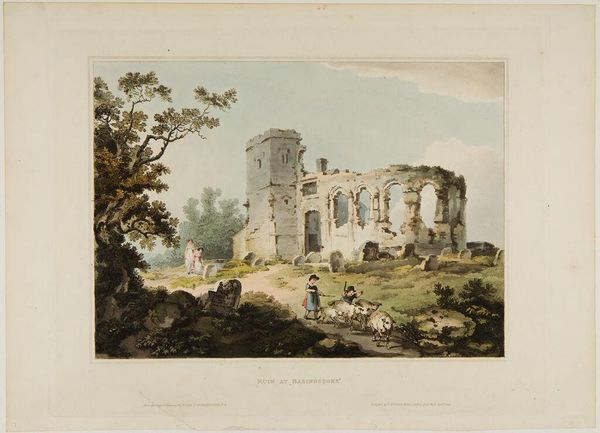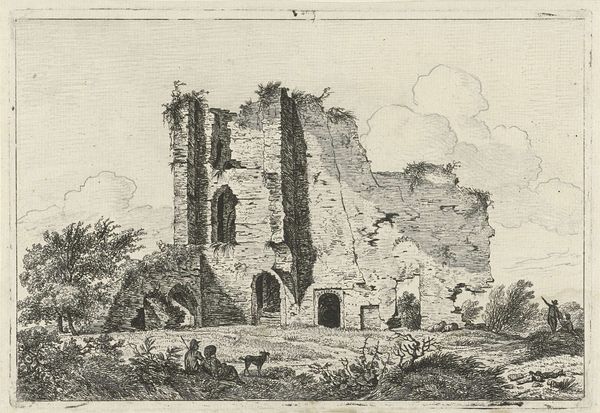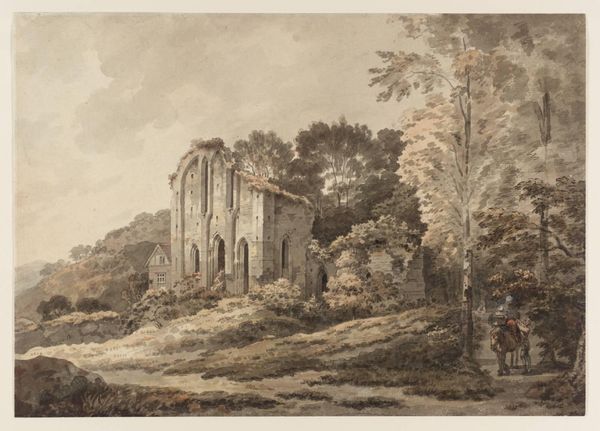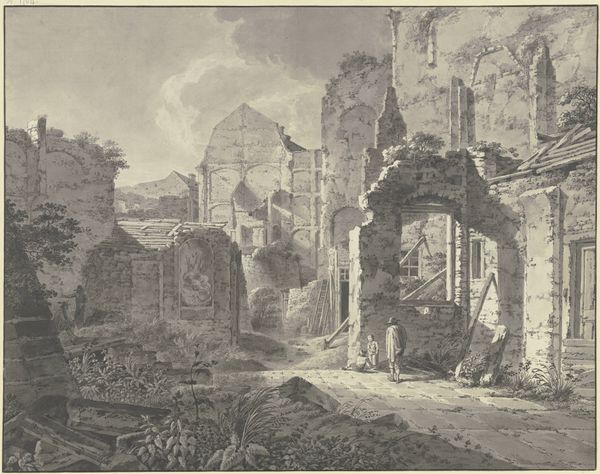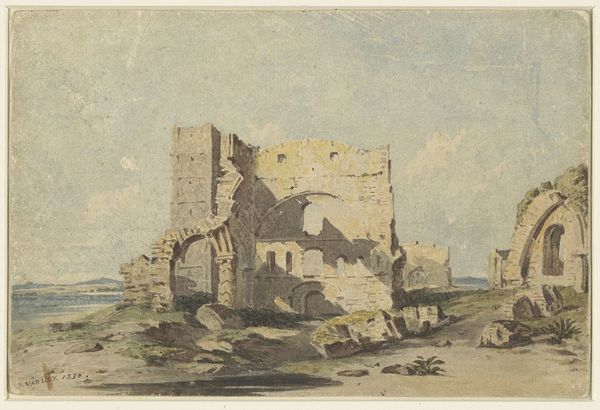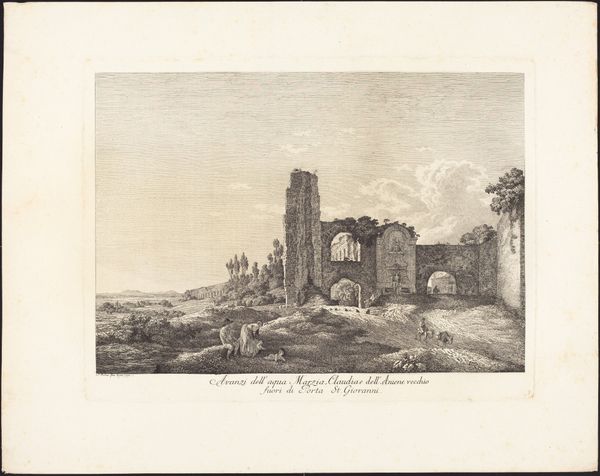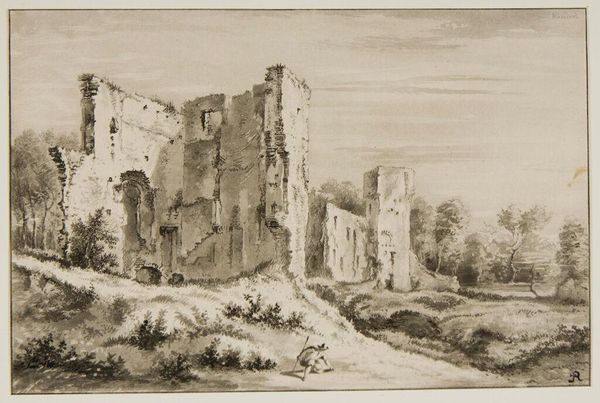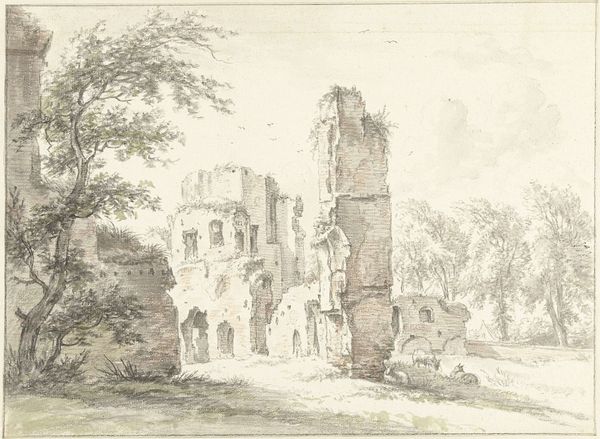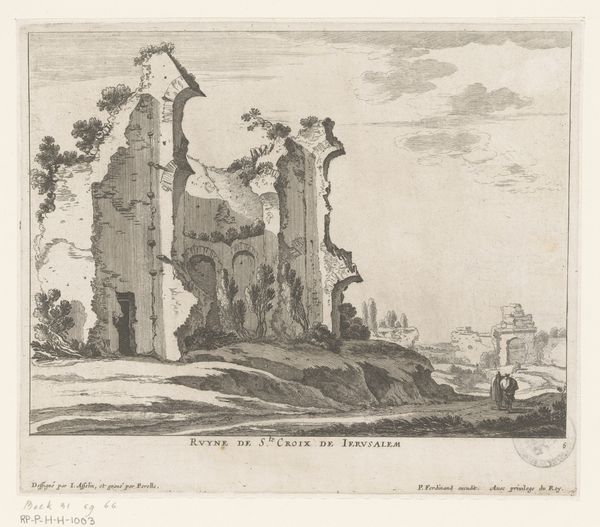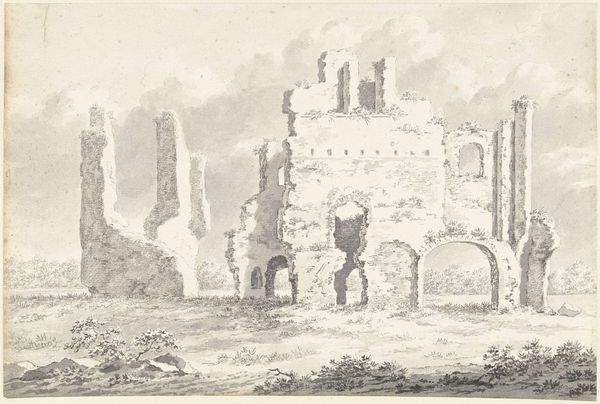
painting, watercolor
#
painting
#
landscape
#
watercolor
#
romanticism
#
cityscape
#
history-painting
Dimensions: height 400 mm, width 551 mm
Copyright: Rijks Museum: Open Domain
Curator: What strikes me immediately is the vulnerability in this landscape, a soft palette rendering such monumental decay. It feels so fragile. Editor: Indeed. This watercolor, titled "Het afbreken van de ruïne van de Abdij van Rijnsburg," which translates to “The demolition of the ruins of the Abbey of Rijnsburg", was made by Johannes van Lexmond somewhere between 1779 and 1838. Curator: Almost ghost-like, don't you think? The crumbling architecture is very pronounced and detailed. Editor: The act of demolition carries heavy implications. Abbeys like this held immense social, political, and religious power, and their dismantling symbolizes shifts in societal structure. You feel the transformation that it embodies, the weight of tradition yielding to something new, but also the violence inherent in erasing history. Curator: Exactly. You see the human figures too. Tiny, almost incidental laborers actively dismantling a space that would’ve, for generations, sheltered, comforted, maybe even oppressed. A silent kind of social earthquake captured in watery hues! Editor: I see them more as agents of change, even if unknowingly. In feminist and queer theory, the demolition could represent a reclaiming of space from patriarchal structures and institutional norms. Destruction becomes a form of construction, laying groundwork for a different kind of future. Curator: Hmmm. The Romantic movement, even at its most political, did seem to be drawn to ruins...like magnets. I’m almost tempted to say it hints at an aesthetic celebration of the passage of time more than any real activist position? I sense yearning, loss, even reverence for what was, rather than explicit revolutionary zeal. Editor: Perhaps that romantic sensibility softens its edges. Still, even beauty born from ruins hints at the power dynamics that shape history and continue to influence our present. Curator: Point taken. The way the artist chose to capture it leaves one with something other than complete destruction though, doesn’t it? There’s an ethereal quality about it...almost hopeful! Editor: I'm leaving this artwork contemplating how we rewrite histories – through art, action, and memory. Curator: And I'm thinking how such sorrow can be captured by watercolor alone, fading into beautiful ephemerality.
Comments
No comments
Be the first to comment and join the conversation on the ultimate creative platform.
